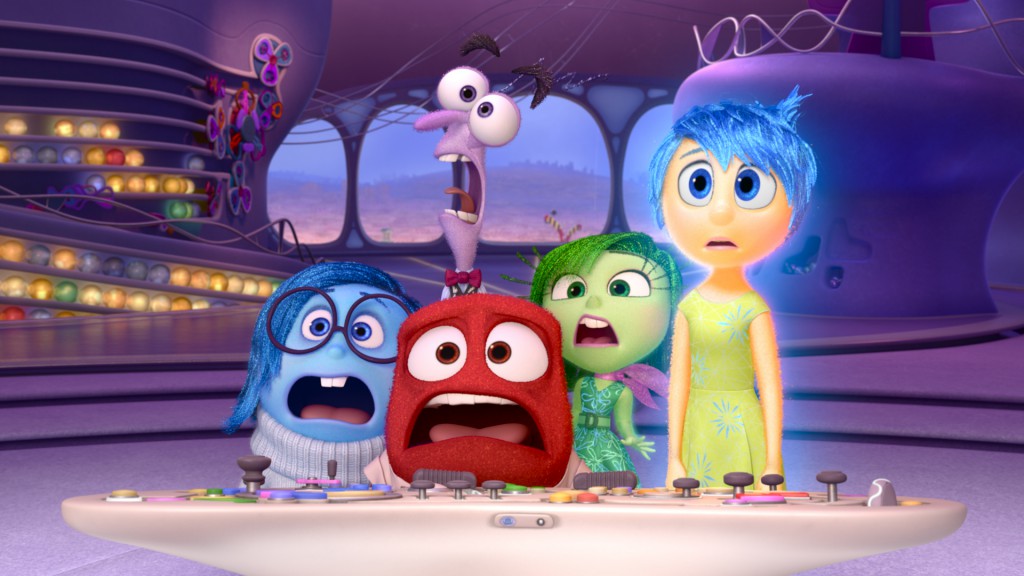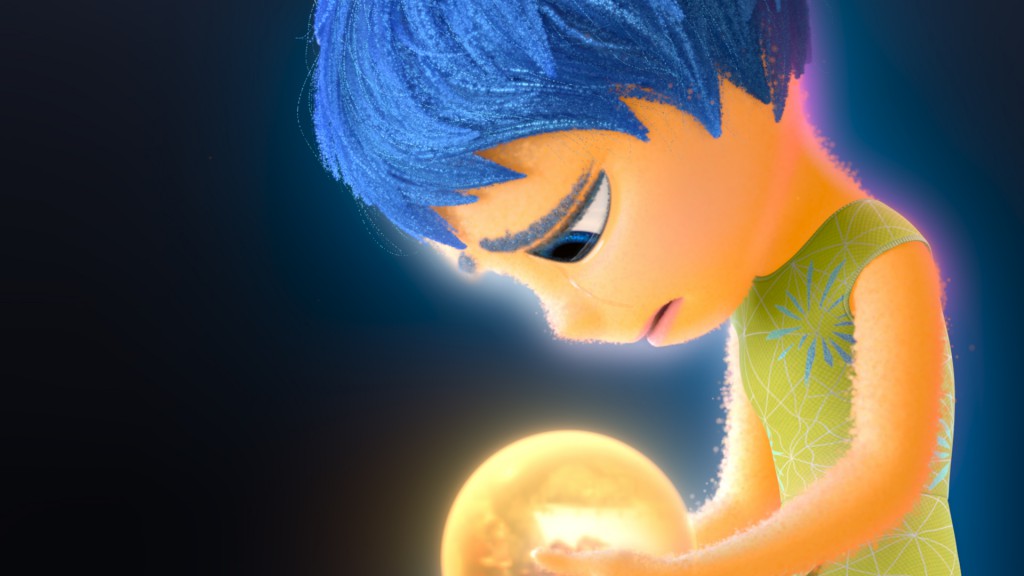Inside Out Week: Interview with Ronnie del Carmen
To celebrate the release of Pixar's Inside Out on Blu-Ray, we've talked to some of the people that helped bring the film to life. Today we share our conversation with Ronnie del Carmen who served as co-director on the film. FanBoy recently talked with del Carmen about the challenges on the film and the impact it's had on the way the public thinks about their emotions:
FanBoy: First, I was impressed with who you list as your influences. It was a practical who's who of animation. Can you talk a little bit about what influenced you to get into the animation field?
Ronnie del Carmen: It's a check path, and some of it is bump around here and hope for something to open up and welcome you in. Lately, my inspirations have been the people I've been working with, especially in my career. I've been helped along by many people who had maybe started before myself. One of them is this French artist. His name is Stefan Montagne. He actually gave me my break in animation. He plugged me in. I knew nothing about anime. He's still a good friend to this day. Bruce Timm, who said I was going to do storyboard for Batman series, even though I wasn't a tested storyboard talent, he says, "Yeah, do storyboard." Wait, am I storyboarding the most sought after show in town back then? Everybody wanted to work on that show. I was so lucky to be working on that. Here at Pixar, I have my story mentor Andrew Stanton and Dee Doctor, those guys I work with. They're respected movies, Finding Nemo and Up. I am lucky to have those people as people to look up to and aspire to become as good as they are, storytellers.
FB: Now that you've had a couple months to take a step back, what are you most proud of when it comes to Inside Out?
RDC: When Pete [Docter, director] and I started to care about this movie in a very profound way, is when we started to understand what Joy wants in her quest. Joy wants Riley to be happy. In fact Joy wants Riley to be happy all the time. It mirrors exactly our journey, Pete and I, as parents. Seeing as that's the inspiration for this movie that Pete had when he started thinking about Inside Out, was about Ellie his own daughter. When Ellie was little, she was so happy and bubbly and bouncing around all the time, she was the voice of that little girl Ellie in the beginning of Up, too. She was always spunky and full of energy.
As she started changing and she's starting to become an adolescent, that version of Ellie started to go away. Pete wondered, "What's going on? What's happening inside her head?" I had that same thing happening to me, because my kids are older. I went through all of that already. I want the same thing that Joy wants. I want my kids to be happy. In spite of that being unrealistic, he can't help but want it. I love that we were able to show what Joy cares about. There are scenes in the movie where you can see Joy wish the best for Riley. Like the scene in the movie when Riley goes to sleep and Joy brings up a treasured moment in Riley's childhood where she's skating and Joy goes up to the screen and says, "I promise that I'm going to move heaven and earth to make sure that everything goes right tomorrow." That is something I can relate to as a parent, and I think all parents out there can relate to. It feels like it is a worthy quest to find out what our audience cares about by finding what we value.
FB: Most times when you're doing a character, you're trying to show what's going on in their head and you have to do that through acting. Was there a fundamental difference in this film, where you know what's going on in Riley's head, yet you're trying to mirror that in Riley's performance, but you have this acting of the emotions itself?
RDC: Yes. That was an amazing challenge. It was actually quite a difficult challenge. We wanted to actually write it so we could juxtapose what the characters inside Riley's head are doing and then also show that response outside Riley, how she behaves. At the beginning, it was like, "How are we going to do that?"
Once we had it on one version very early, we did that sequenced dinner and it was Pete and me and Jonas [Rivera, producer], and I started trying to make Pete laugh by making a sequence about mom and dad at dinner with Riley in the middle. We wanted to show the concept of the movie by showing what the characters inside each individual head was doing and how it shows outside with mom or dad or Riley. It sounds like a game. Instead of being scared of it, which we were, we started to play with it. We started to find out, okay, so let's imagine this state of each of these characters. They have the human characters, and find out what's happening inside their head and how they would behave. We have three stages of actors with very different intentions. As well as we have three individual characters in the outside world. It sounds like it was going to be a logistical nightmare to orchestrate that in writing. It turned out to be on of the most fun things to work on. After that, it kind of felt like we got lucky we found a fun way to concept and show emotions, the characters being human and emotion mind characters, it felt like, "Wow, we're so lucky to have found that so early."
FB: What's it like to see your characters that you've worked so hard with, not only become a cultural touchstone, but one thing I was impressed with was the amount of folks that are using your film to address children with developmental disabilities to help showcase their emotions. Your characters are having such a profound impact on the public at large. Does that ever sink in?
RDC: No, it doesn't quite all the way sink in. We're mostly marveling at it. When we were making this movie, we would every now and then stop and take a moment to think. If we're doing our job right, people are going to use this movie as a way into discussions about... how internally they feel about things, about life, about their challenges. We're going to be using these characters to start conversations. Families, friendships, relationships. It sounds like, at some point, a huge responsibility. We better not mess up. That's why we actually talked to experts about the human mind and experts about human emotions, so that we could do it as best as we can, using the data that we gleaned from them, as well as also trying to be creative and have fun with it. It was daunting.
Now that the movie's out, people tell us; they say this movie is allowing them finally to address certain things they weren't able to address, or understand a larger context about their own feelings, relative to how they behave or how they behave with other people. Wow, thank you, but this conversation is larger than me. We don't own emotions. All of us have them. That's why it's so great. We're so happy that the movie is sparking conversations and I'm hoping that all of this helps, and kind of make the burden of life a little lighter, or more understandable.
FB: Thank you so much. Congratulations again on the success of the movie. We wish you a continued success at Pixar. We can't wait to see what you're doing next.
RDC: Thank you so much.


